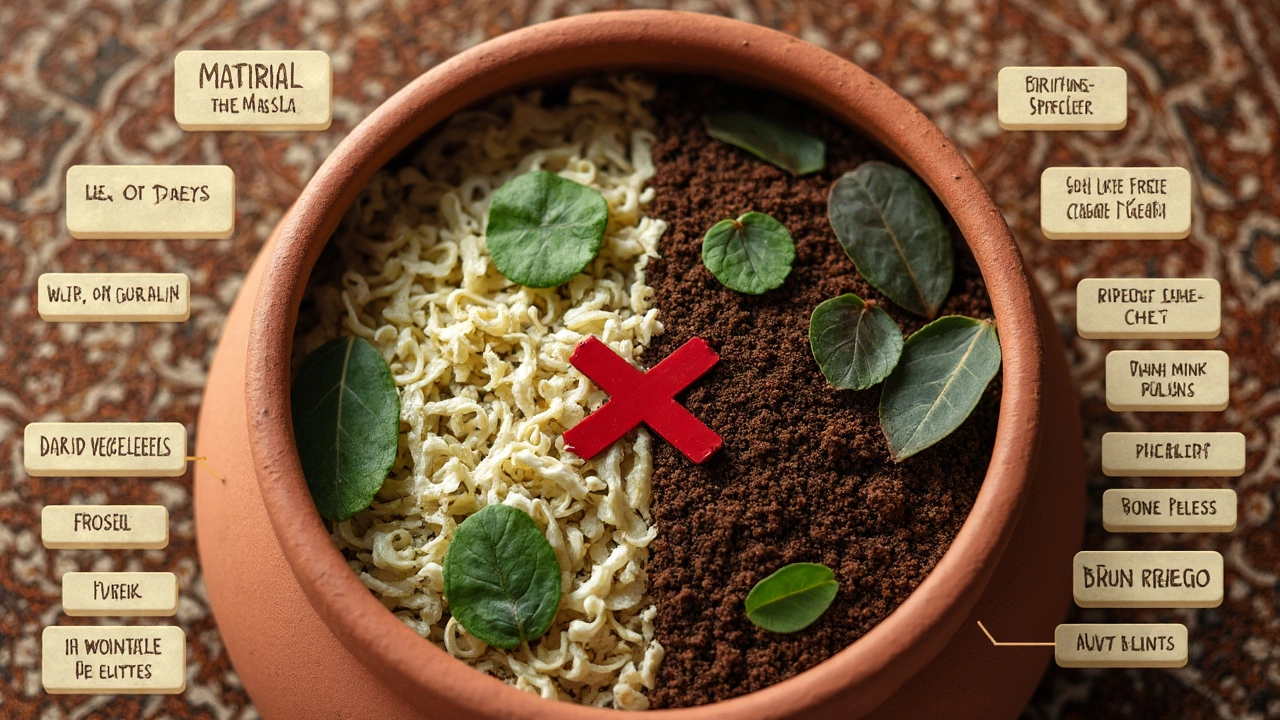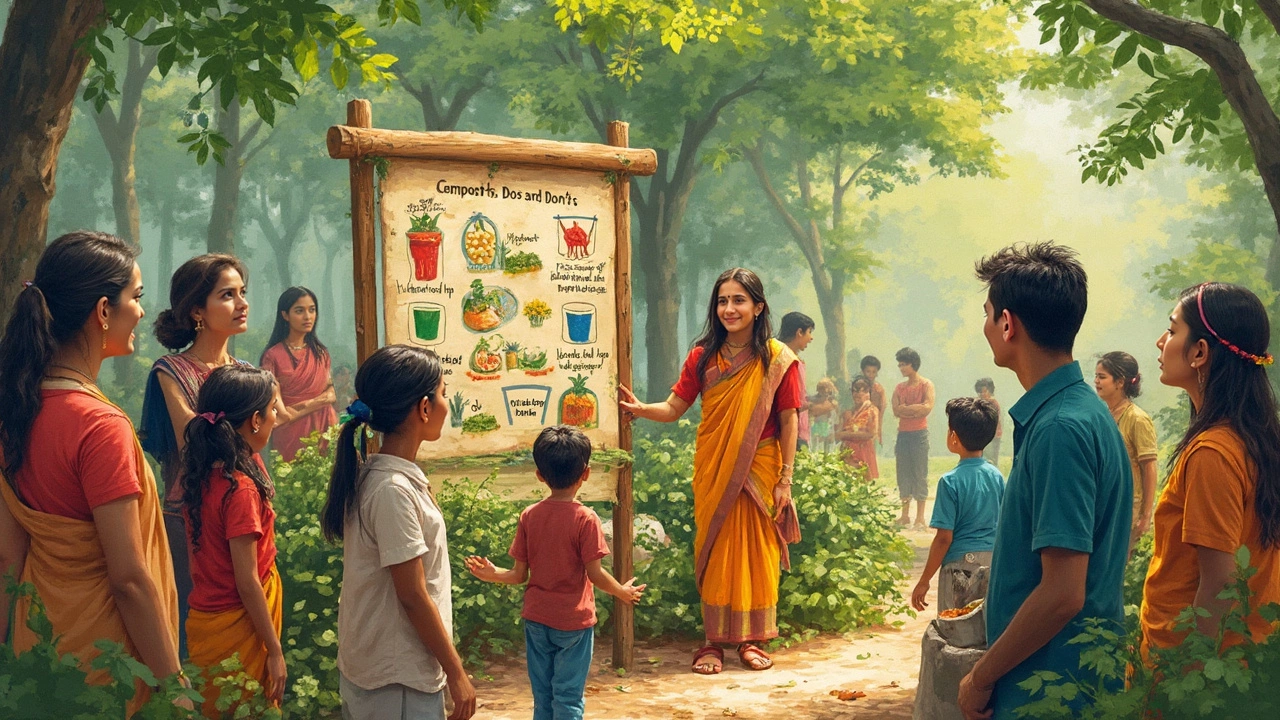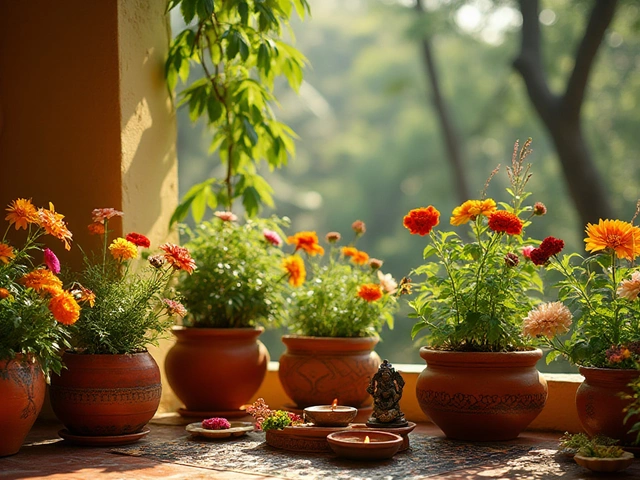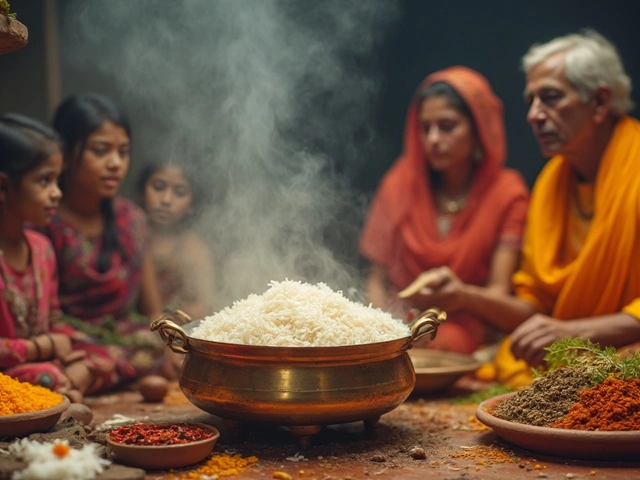Ever opened your compost bin and gotten hit with a funky whiff that makes your cat back away? It’s one thing for things to break down and another for them to get downright nasty. There’s a reason your compost sometimes turns into a stinky disaster or becomes a street raccoon’s personal buffet. It’s not just about what you throw in; it’s what you shouldn’t throw in. I used to think compost could gobble up anything. Banana peels, sure. But chicken bones? Or that old slice of pizza? Turns out, some things can sabotage your compost—and your garden hopes—fast. Let’s dig into what you really shouldn’t add to your home compost, why, and what to expect if you ignore the rules.
Why You Need to Be Picky About What Goes into Homemade Compost
A backyard compost pile looks forgiving enough, but nature has rules. Toss in the wrong scraps and you’ll attract critters, create foul smells, even endanger your plants. Some items breed harmful bacteria, won’t break down, or leach toxins. Dealing with a mess like that is never pretty. Most home compost bins can’t get hot enough to zap everything unsafe. Commercial composters can process some things you shouldn’t risk at home—think of massive piles that steam on cold mornings. Backyard piles? They’re great for veggie trimmings, yard clippings, eggshells. But they’re not incinerators for all your food waste.
Some scraps rot slowly. Others carry diseases, weed seeds, or synthetic chemicals. Like that pesticide-laden grass clippings or the sticker you forgot to peel off your apple. It’s more than just common sense—it's about knowing how compost works. Compost breaks things down by feeding billions of microbes and fungi. Give them the right food and they’ll reward you with dark, crumbly gold. Give them the wrong stuff and you’ll breed chaos: pathogens, pungent gases, and pests. Compost isn’t magic; it’s messy science done right.
| Material | Problem |
|---|---|
| Meat & Bones | Attracts rodents, smells, slow to decompose |
| Dairy Products | Produces odor, can develop harmful bacteria |
| Weeds with Seeds | Seeds survive, may sprout in compost |
| Treated Wood Splinters | Toxins may leach into compost |
| Pet Waste (dog, cat) | Can contain parasites/harmful bacteria |
| Synthetic Junk (plastic, foil) | Never breaks down, contaminates compost |
For the best results, you want your compost to heat up to around 140°F (60°C). That’s the sweet spot for killing off most weed seeds and disease-causing nasties. But the small scale of home piles makes hitting those temps tricky. That’s why you have to be more careful than big municipal composters. Be choosy and you get rich, safe compost for your tomatoes and lettuce. Be reckless, and well, enjoy fighting rodents in your backyard at midnight.

What You Should Never Put into Homemade Compost (and Why)
The list of no-nos is longer than most folks think. Start with the obvious: avoid putting any meat or fish scraps in your compost. They bring in pests—raccoons, rats, even neighborhood dogs—and create a rotten, greasy mess. Bones take ages to decay, much longer than fruit peels or coffee grounds. Dairy products like cheese, butter, and yogurt go off fast and churn up smells that’ll clear out half your block. Greasy foods? The fat coats everything, locking out air and suffocating your beneficial microbes.
Say no to pet waste. Dog and cat poop isn’t like cow or horse manure; household pets sometimes carry parasites and bacteria that home compost can’t kill. That’s the last thing you want spread over your spinach. Likewise, don’t pile up diapers (yep, even the “eco-friendly” ones) or cat litter. These are loaded with chemicals and pathogens—leave these to special waste programs instead.
Another sneaky culprit: weeds gone to seed. If you’ve pulled weeds full of seeds and toss them in, expect a wild return when you spread your finished compost. The majority of backyard piles never get hot enough to kill those little escape artists. Same goes for diseased plants. Got blight on your tomatoes or powdery mildew on your squash leaves? Don’t add those to the mix unless your compost actually steams (it probably doesn’t). Disease spores and pathogens live on, ready to infect.
What about “compostable” plastics? Labels like biodegradable, eco-friendly, or compostable can trick you. Most require high-heat industrial facilities; your backyard bin might never break them down. The result? You dig up shriveled, stubborn chunks that litter your garden beds. Oh, and those produce stickers? They’re plastic. Always peel them off fruit and veg peels. One small sticker can stick around long after your carrot tops turn to soil.
Now let’s talk synthetic chemicals. Never put pressure-treated or painted wood into compost. Chemicals used to preserve wood leak into your happy little micro-ecosystem. Bleached paper, glossy magazine pages, and receipts contain inks, glues, and solvents you don’t want. Even some tea bags use nylon mesh—check before they go in.
If you’re a coffee lover, skip the K-Cups—they're plastic. Tea drinker? Most ordinary loose-leaf teas are fine, but toss the string and staple. Same for citrus peels if you live in cooler climates; they break down slowly, and loads of citrus can mess with compost pH. Sprinkle, don’t dump.
Here’s a quick-hit list of what you shouldn’t compost at home:
- Meat, fish, bones
- Dairy products (milk, cheese, butter, yogurt)
- Oils, greasy foods, lard
- Pet waste (dog, cat)
- Diseased plants
- Weeds with seeds
- Treated or painted wood shavings
- Coal ashes (full of sulfur, toxic stuff)
- Synthetic materials (plastic, foil, rubber, glass)
- Glossy or treated paper (magazines, receipts)
- Large quantities of citrus peels
- Compostable/biodegradable plastic or cutlery
One last surprise is vacuum cleaner dust, especially if you’ve got synthetic carpet or pets treated for fleas—it stirs in synthetic bits or chemicals. Same with the lint from your dryer: most modern clothes have polyester, which doesn’t rot.

Pro Tips and Unexpected Facts for Foolproof Composting
Making epic compost isn’t just about following the rules; it’s knowing the little tricks and secrets. Start by thinking about balance—roughly half “greens” (wet stuff: veggie scraps, coffee grounds, grass clippings) and half “browns” (dry: leaves, shredded newspaper, cardboard). This helps keep your pile aerated and happy. If you dump in too much of one thing (especially wet kitchen scraps), the pile turns anaerobic and reeks.
If you find moldy bread or old pasta in your kitchen, you can compost small amounts, but break them up and bury them deep in the pile—they attract pests if left on top. Same goes for grains or rice, which can draw rodents. I learned the hard way not to pitch in a whole loaf (thanks, Liana!). Bones from chicken night? Those belong in the trash, not the bin.
Many folks ask about eggshells. Go for it! Just rinse and crush them—they add calcium and break down faster that way. Coffee grounds and filters? Perfect, but skip the K-Cups and make sure any filter is unbleached. Sawdust from untreated wood is a goldmine for compost—just add in moderation and mix with greens so it doesn’t pack down.
Here’s a simple tip: chop larger scraps before tossing them in. The smaller the pieces, the faster the microbes can work. Got a ton of grass clippings? Mix them with dry leaves or shredded cardboard to stop compacting and keep things aerated.
Compost needs air and moisture, but not too much. If your pile is too soggy, add dry stuff and mix. Too dry? Dribble a little water. Turn the pile often to keep the process lively and prevent mats of slimy green goo. Regular turning brings in oxygen, essential for the good microbes.
Watch what your neighbors toss in their piles. About 43% of home gardeners admit to slipping in things they shouldn’t, just hoping for the best. But results show that careful piles are much less likely to harbor pathogens, weed seeds, or end up a critter magnet—even reducing the chance of rotten odors by 60%, according to a 2023 backyard composting survey.
Seasonal storms and hot weather speed up breakdown. If your pile is slow in winter, that’s normal. Don’t expect it to steam in January unless you’re tossing in lots of nitrogen-rich greens and turning often. Cover piles during heavy rain to prevent soggy messes that leach nutrients. If you need to speed things up, you can buy compost starter, but just mixing and tending your pile works well.
Remember, composting is both art and science. If you avoid the usual hazards and keep a good mix, your finished product will smell like rich forest earth, not something you’d regret opening. Stick to the right stuff, and your garden will thank you all season long.




